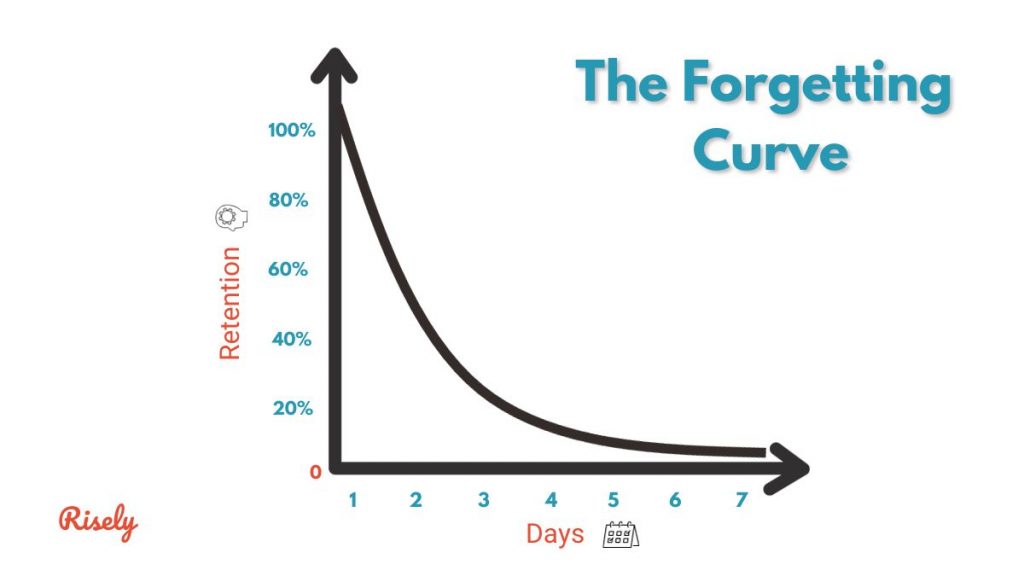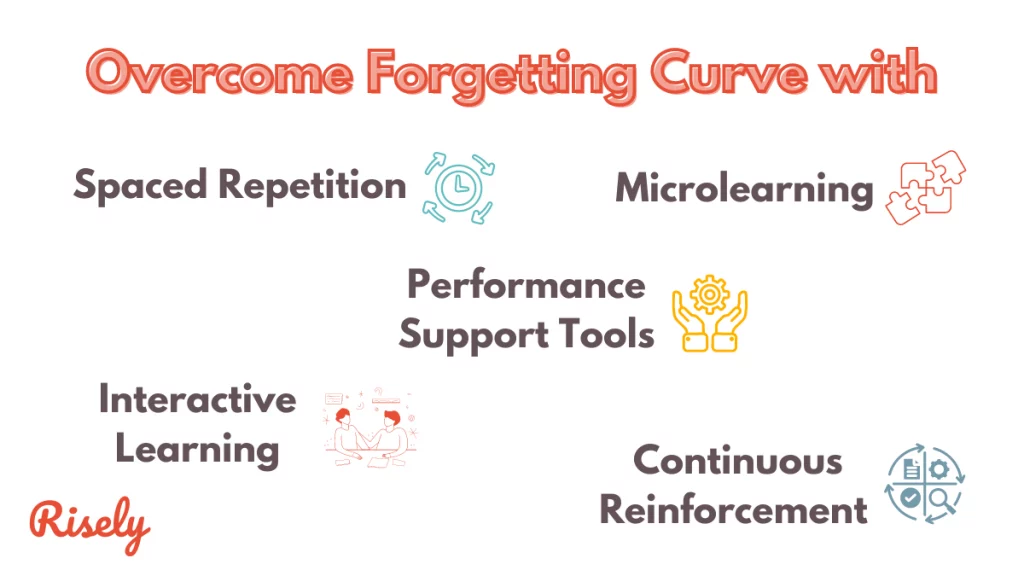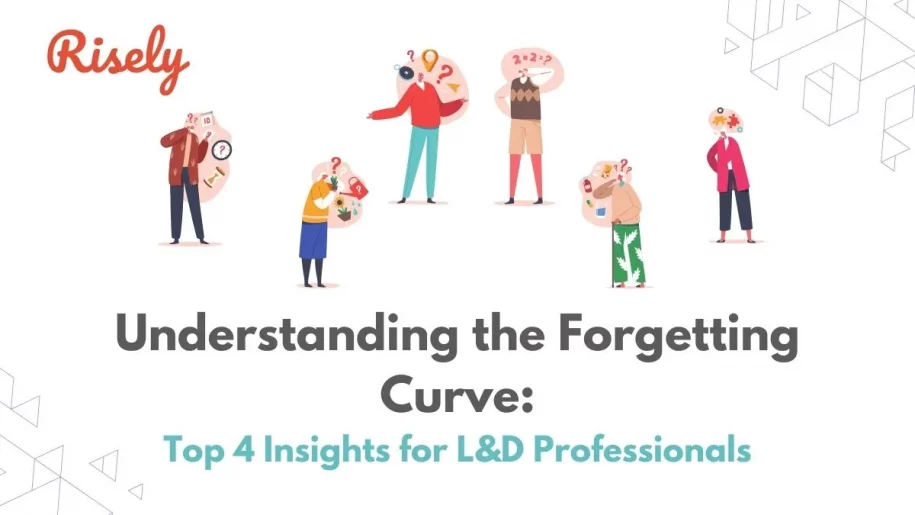Understanding the Forgetting Curve: Top 4 Insights for L&D Professionals
The human mind has several fascinating cognitive abilities, such as thinking, learning, analyzing, remembering, etc. These abilities allow us to perform our day-to-day simple to complex functions. Memory and remembering are integral parts of it all. It is because of the vast number of things that we remember that allow us to become better and not repeat past mistakes. However, along with remembering comes forgetting. Have you ever thought about why you remember certain things and forget the others? And how do you remember something you learned years ago but still forget the thing you learned a few days back? Although the mind stores huge amounts of information, it still forgets some things. I’ll help you figure out the answers to these questions.Uncover: The Forgetting Curve
In the late 19th century, German psychologist Hermann Ebbinghaus made an epic discovery in memory retention. He conducted spaced learning sessions on himself and uncovered the decline of memory retention over time. He concluded that the human mind tends to discard newly acquired information over time, a phenomenon known as the “forgetting curve.”What is the forgetting curve?
The forgetting curve depicts the relationship between memory retention and time, impacting the long-term learning curve. It shows an exponential decrease in memory within the initial days after learning. This decline occurs regardless of the epic meaning of the information if it is not rehearsed again. Ebbinghaus conducted experiments on himself to study how quickly he forgot nonsense syllables (meaningless combinations of letters) over time. He found that forgetting follows a logarithmic pattern: initially rapid, then gradually tapering off. This curve depicted below shows that we forget most newly learned information within the first few hours or days after learning it, with the rate of forgetting decreasing over time. For example, if you learn a new concept today, you might retain a large portion of it initially. Still, without reinforcement or review, your memory of it will decline rapidly, eventually reaching a plateau where you retain only a fraction of what you initially learned. Or think about when you train other people for specific skills. You prepared and delivered a great session with all the necessary information, but what after that? The trainees actually start losing all that knowledge instantly, and within a few days, it’s forgotten.
Factors affecting the forgetting curve
Several factors can influence the rate at which information is forgotten:- Complexity of the Material: More complex or abstract information may be more difficult to retain than simple, concrete concepts.
- Learner’s Prior Knowledge: Learners who have prior knowledge or experience related to the new information may retain it better than those who do not.
- Learning Environment: Distractions, interruptions, and other environmental factors can impact how well information is encoded and subsequently retained.
- Effectiveness of Initial Learning Experience: The quality of the initial learning experience, including the teaching methods used and the level of engagement of the learner, can influence how well information is retained.
- Reinforcement and Review: The frequency and timing of reinforcement and review activities can significantly affect memory retention. Spaced repetition, which involves reviewing information at increasing intervals over time, is particularly effective in combating forgetting.
Other Interesting Reads
How does the Forgetting Curve Influence L&D?
The influence of the forgetting curve on Learning and Development (L&D) is significant. Well, why do L&D professionals need to learn about this? We must focus on creating the best material, bringing in the best experts, and make them train the employees. However, it is equally essential to focus on retaining the knowledge gained. Learning new things might not be a problem for many but retaining that for a long time and implementing it is a problem that is very common in workplaces. That’s why we trying to understand why we forget many things. Not only that, the forgetting curve imapcts the field of L&D in several ways. Read below to find out exactly why you should consider it while designing training programs.- Retention Challenges: The forgetting curve highlights the natural tendency of individuals to forget information over time, especially if it is not reinforced. L&D professionals need to be aware of this challenge to design learning experiences that address the potential decay of knowledge.
- Optimizing Training Programs: L&D professionals must design training programs that go beyond initial knowledge transfer. Understanding the forgetting curve emphasizes the need for ongoing reinforcement and review to optimize learning outcomes.
- Resource Efficiency: Recognizing the impact of the forgetting curve helps L&D teams allocate resources more efficiently. Instead of investing solely in one-time training events, they can design programs that include spaced repetition and reinforcement strategies, ensuring a more lasting impact without unnecessary repetition.
- Improved Learning Outcomes: Focusing on the forgetting curve encourages L&D professionals to adopt effective teaching methods. Incorporating spaced repetition, interactive learning, and continuous reinforcement can improve learning outcomes and better knowledge retention.
- Adaptation of Training Strategies: L&D professionals can adapt their training strategies to align with the principles of the forgetting curve. This may involve incorporating technologies that support spaced repetition, implementing microlearning approaches, and utilizing performance support tools to reinforce learning over time.
- Enhanced Employee Performance: By acknowledging the forgetting curve, L&D professionals can contribute to enhanced employee performance. Training programs that account for the natural decay of knowledge and provide mechanisms to counteract it contribute to a more knowledgeable and competent workforce.
- Strategic Learning Design: Understanding the forgetting curve informs the strategic design of learning experiences. L&D professionals can structure content to facilitate easier recall and integrate reinforcement mechanisms, resulting in a more effective and sustainable learning journey.
- Promoting Continuous Learning Culture: The forgetting curve emphasizes the importance of continuous learning. L&D professionals can use this concept to advocate for a culture of lifelong learning within organizations, encouraging employees to regularly revisit and reinforce their knowledge. A positive and strong workplace culture can leave a huge impact on the team’s work.
- Measuring and Evaluating Training Impact: L&D professionals can use the forgetting curve as a framework for evaluating the effectiveness of training programs. By assessing knowledge retention over time, they can identify areas of improvement and adjust their strategies to better align with the learning needs of employees.
Strategies to Overcome the Forgetting Curve
The first task of understanding the “what” and “why” is done; let’s move to the “how” part now! You know how easily trainees might forget the knowledge you or other experts impart, so you’ll automatically think about how to prevent it as much as possible. And this becomes even more important when you are responsible for training a whole bunch of people. Well, here are some strategies that would be helpful for you:Spaced Repetition
Implement a spaced repetition system where learners review and revise material at increasing intervals. This approach involves revisiting information just as it’s about to be forgotten, reinforcing the memory, and extending the retention period. Technology-based tools like flashcard apps or learning management systems can automate spaced repetition schedules.Microlearning
This is also one of the aspects of L&D trends for 2024. It essentially means to break down content into bite-sized, easily digestible modules or lessons. You should deliver information in short bursts, focusing on specific concepts or skills. Microlearning allows for better engagement and information retention, aligning with providing information in a way that minimizes the impact of the forgetting curve.Interactive Learning Activities
Incorporate interactive elements such as quizzes, discussions, simulations, and real-world scenarios into training theories. Active participation enhances engagement and reinforces learning, making it more memorable. Interactive activities can help counteract the passive nature of traditional learning methods.
Continuous Reinforcement
Pay attention to establishing a system of continuous reinforcement beyond the initial training sessions. Provide regular opportunities for learners to apply their knowledge in practical scenarios, participate in discussions, or receive feedback. Reinforcement can be achieved through ongoing learning opportunities, mentorship programs, or periodic assessments.Performance Support Tools
You can offer readily accessible performance support tools that employees can use as quick references for daily tasks. Job aids, checklists, and online resources provide just-in-time information, supporting learners when needed. These tools act as reinforcements, bridging the gap between formal training and on-the-job application.Conclusion
As an L&D professional, you must understand the key concepts behind memory and learning. And this forgetting curve gives you a lot of insights that can help you make your training process much more effective and efficient. Think about the components like time, strength, relevance, and presentation, which can affect the outcomes of the learning programs that you create and deliver. After understanding this, build tricks and techniques to help your trainees overcome the forgetting curve. L&D professionals can employ various strategies like reinforcing content regularly, ensuring clarity and relevance in learning materials, and incorporating interactivity can all enhance memory retention. Spaced learning, which involves distributing learning over time, effectively retains the new learning. L&D professionals can create more effective and impactful learning experiences by leveraging these insights from the forgetting curve. Incorporating these strategies into training programs will support long-term memory retention and maximize the benefits of learning and development initiatives.Ace your people management role with strong delegation skills.
Master the art of effective delegation by reviewing your skills with a free assessment now.
Other Related Blogs
Building an Ultimate Leadership Development Action Plan
How to Build a Leadership Development Action Plan? Having a strong Leadership Development Action Plan is more critical than ever in today’s evolving business world. Whether you’re looking to drive…
Leadership Journey Examples on the RiseUp Radio Podcast
Leadership Journey Examples on the RiseUp Radio Podcast Leadership isn’t a destination – it’s a journey filled with twists, turns, and transformative moments that shape not just careers, but entire…
What is Immersive Learning? A New Era in Education
In this blog, you’ll learn what is immersive learning and how it is changing training, increasing engagement, and influencing the future of workforce development. … Read More
What are Learning Designs? All You Need To Know
This blog explains what learning designs are in depth while also covering it’s key components. It tells you about the process involved in creating a good learning design along with…


